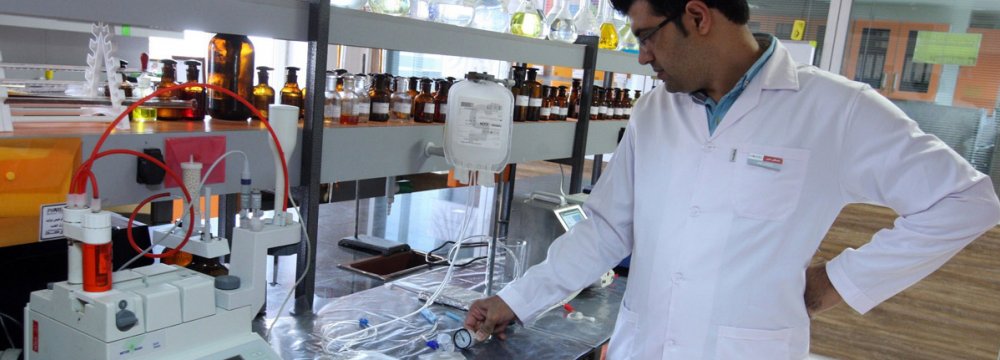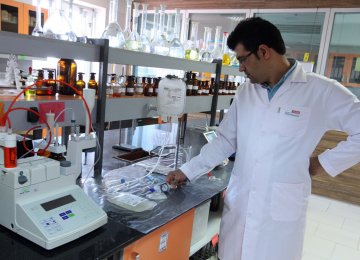The only blood product center in Tehran has a high average travel time to health centers and is in dire need of relocation, says Dr. Ali Akbar Pourfathollah, head of Iranian Blood Transfusion Organization (IBTO).
“We need to make the movement of blood products faster and easier and enable the organization to perform on par with global standards,” he was quoted as saying by ISNA last week.
The center is located at Vesal Street, one of the most crowded and traffic-congested areas in the center of the capital.
“A simple disruption in traffic flow or occurrence of an accident (gas leak, land subsidence, fire, etc) on the street or in the nearby areas can prevent on-time blood supply to health centers and hospitals. In some cases a few seconds means difference between life and death,” he said.
He stressed that the center must be relocated to a new place closer to the main highways.
“The best place for the new center was proposed near IBTO’s head office adjacent to Milad Tower, Milad Hospital and Iran University of Medical Sciences, which are all on Hemmat Expressway,” he said.
However, lack of cooperation and indifference of Tehran Municipality (TM) has left the matter of issuing a construction permit in limbo. The TM argues that the area is a “tourism zone” and therefore any construction is banned in the area, he said, enumerating the obstacles on the way of moving the key blood center.
“The IBTO central building was constructed more than three decades ago (long before construction of the iconic Milad Tower) and was renovated a few years ago,” Pourfathollah recalled.
Upholding Standards
“We are regularly looking at ways that can help make blood products transport faster and easier,” he said, adding that IBTO has done all it can to solve the problem in cooperation with the government, which has agreed to pay the construction costs for the new site.
“We have planned to build a center with three underground floors (as a parking space for vehicles that transport blood products), and only two floors will be constructed above ground. Therefore the building won’t block the view of Milad Tower.”
“I have contacted Tehran Mayor Mohammad Baqer Qalibaf several times to discuss the issue, but to no avail,” Pourfathollah complained. “He must allocate a few minutes to come and see that the project will not mar Milad Tower’s view in any way.”
Over two million blood units are donated to the IBTO every year and its annual capacity has currently reached 400,000 liters of plasma production. According to data from the organization released in January, at present the rate of blood donation in Iran is 27 units per 1000 people.
“The current level of plasma production is 400,000 liters, but there is still a deficit of 200,000 liters to reach self-sufficiency,” Pourfathollah had said in September.
Blood plasma is used to produce life-saving medicines in blood disorders such as factors VIII, X and IX, and immunoglobulin and albumin deficiencies.
At least 600,000 liters of plasma is required to be produced annually to meet domestic demand for factor VIII, an essential blood-clotting protein, also known as anti-hemophilic factor (AHF), which is derived from plasma.
According to the Iranian Hemophilia Society (IHS) at present, 4,386 patients with Hemophilia A suffer from deficiency of factor VIII. Also, 930 patients suffer from Hemophilia B, a disorder caused by a lack of factor IX.
Byproducts produced by donated blood also include RBCs for thalassemia patients with severe bleeding, plasma for patients with severe burns and platelets for cancer patients or individuals with clotting problems.
In plasma donation procedure, blood is removed from the body, blood cells and plasma are separated, and the blood cells are returned to the donor while the plasma is collected and frozen to preserve it for eventual use as fresh frozen plasma or as an ingredient in the manufacture of a variety of medications.
IBTO was founded in 1974 and its activities are governed by laws of the Ministry of Health.






Add new comment
Read our comment policy before posting your viewpoints